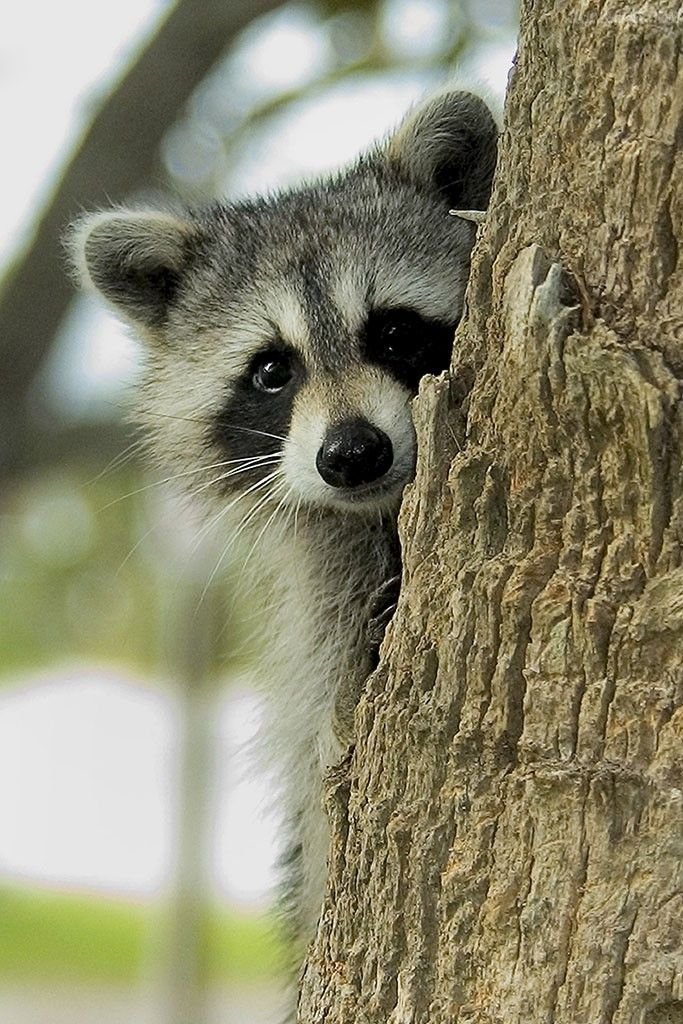
Raccoons are known for their cleverness and adaptability. They might be rummaging through your trash at home, but in nature, they have their own ways of surviving. If you’re looking for tips on how to handle an encounter with these fascinating creatures, you’re in the right place. Let’s dive into what you should do if you come face-to-face with a raccoon while out and about.
Understanding Raccoon Behavior
Before you react, it’s important to understand a bit about raccoon behavior. Raccoons are primarily nocturnal, meaning they are most active at night. During the day, you might see them basking in the sun or hiding out in trees or brush. They’re curious critters and often scavenge for food, which is why you might see them in urban areas or near campsites.
You might be wondering how to tell if a raccoon is feeling threatened or just curious. If you spot one, look for signs like a raised tail or ears pointed forward, which indicate curiosity. Conversely, if a raccoon feels cornered, it might hiss, growl, or even bare its teeth. Recognizing these signals can help you gauge how to proceed.
Remember, raccoons are wild animals. While they might seem cute and cuddly, they can be unpredictable. That’s why knowing how to act in their presence is crucial.
Stay Calm and Avoid Sudden Movements
If you encounter a raccoon, the first thing to do is stay calm. I know, it can be hard when you’re met with those beady little eyes staring back at you! But here’s the thing: sudden movements can startle the raccoon, causing it to react unpredictably. Imagine if someone suddenly shouted in your face—you might just jump or lash out!
Instead of panicking, take a deep breath and observe the raccoon for a moment. You want to assess the situation. Is it just passing through, or does it seem to have taken an interest in you? Most raccoons will just continue their business if they don’t feel threatened, so patience is key.
Keep Your Distance
Once you’ve assessed the situation, the next step is to maintain a safe distance. Raccoons can be quite territorial, so approaching them is not a great idea. You should ideally stay at least 50 feet away to avoid any chance of startling or provoking them. This distance allows you to enjoy watching these fascinating animals without putting yourself at risk.
If the raccoon seems to be approaching you, do not run away. Instead, slowly back away while keeping your eyes on the animal. Turning your back might encourage it to come closer out of curiosity—or worst, it might feel threatened. Staying calm and backing away gives both of you the space needed to feel safe.
Make Your Presence Known
If a raccoon seems too close for comfort, making your presence known can help deter it. You can make loud noises or wave your arms, but do this carefully. Aim to make yourself appear larger without making sudden movements that could startle the animal.
Shouting or clapping can work wonders too. Just remember to be firm, not aggressive. You’re trying to communicate that you’re not a threat but that you also aren’t someone to mess with. You might even try rattling some objects (like your backpack or a walking stick) to create some noise.
Know When to Leave the Area
Sometimes, the best course of action is simply to leave the area. If the raccoon isn’t backing down or seems more interested in you than usual, it might be time to go. Heading towards a more populated area could help you feel safer too. Not all encounters have to end in confrontation—many can just be a peaceful observation from a distance.
Leaving the area helps avoid potential problems. After all, wild animals have their own space and needs. Just like how you wouldn’t want someone camping out in your backyard uninvited, raccoons prefer their territory respected.
Understand the Risks
It’s important to remember that raccoons can carry diseases, such as rabies. While the chances of encountering a rabid raccoon are low, it’s best to take precautionary measures. If a raccoon approaches you, it’s wise to limit contact, as rabid animals may exhibit unusual behavior.
If you’re ever bitten or scratched, seek medical attention. Don’t hesitate to inform a nearby park ranger or local wildlife official about aggressive or sick raccoons. These professionals know how to handle wildlife and can ensure the safety of both animals and humans.
Educate Yourself About Local Wildlife
To better prepare for encounters with raccoons and other wildlife, take some time to educate yourself about the animals in your area. Knowing their habits, behaviors, and what to do if you encounter them can make a big difference. You might even find it fun to learn about these critters—understanding their role in the ecosystem can increase your appreciation for them.
Consider visiting local nature centers or wildlife organizations that provide resources and programs about local fauna. Engaging with your community can not only help you learn but also foster a sense of respect and care for these wild neighbors.
In conclusion, encountering a raccoon can be both exciting and daunting. Remember to stay calm, keep your distance, and respect their space. These clever little creatures play an important role in nature, and knowing how to handle an encounter can ensure a safe experience for both you and the raccoon. Embrace the adventure, learn from it, and enjoy the beauty of wildlife in your surroundings.

